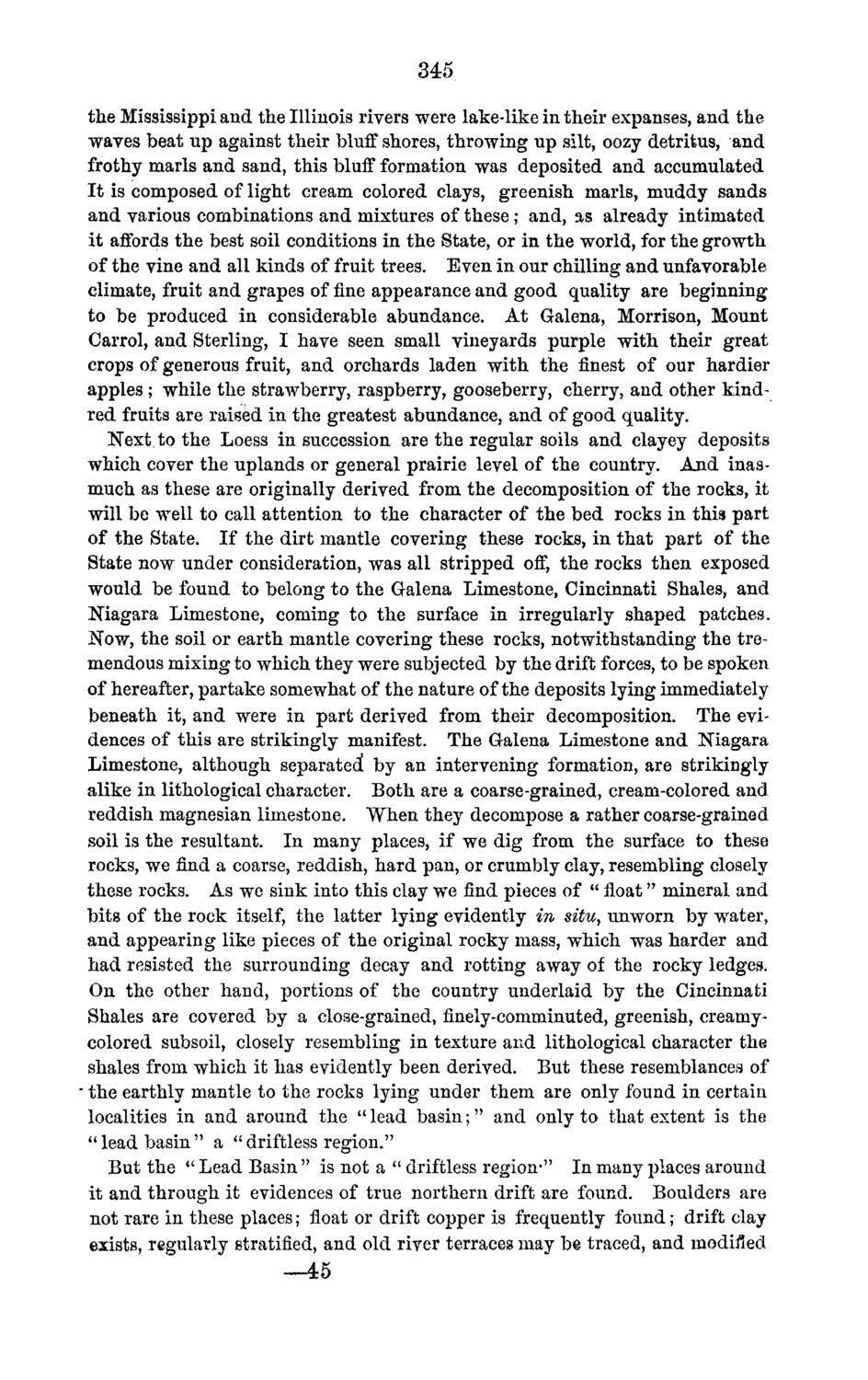| |
| |
Caption: Board of Trustees Minutes - 1870
This is a reduced-resolution page image for fast online browsing.

EXTRACTED TEXT FROM PAGE:
345 the Mississippi and the Illinois rivers were lake-like in their expanses, and the waves beat up against their bluff shores, throwing up silt, oozy detritus, and frothy marls and sand, this bluff formation was deposited and accumulated It is composed of light cream colored clays, greenish marls, muddy sands and various combinations and mixtures of these; and, as already intimated it affords the best soil conditions in the State, or in the world, for the growth of the vine and all kinds of fruit trees. Even in our chilling and unfavorable climate, fruit and grapes of fine appearance and good quality are beginning to be produced in considerable abundance. At Galena, Morrison, Mount Carrol, and Sterling, I have seen small vineyards purple with their great crops of generous fruit, and orchards laden with the finest of our hardier apples; while the strawberry, raspberry, gooseberry, cherry, and other kindred fruits are raised in the greatest abundance, and of good quality. Next to the Loess in succession are the regular soils and clayey deposits which cover the uplands or general prairie level of the country. And inasmuch as these are originally derived from the decomposition of the rocks, it will be well to call attention to the character of the bed rocks in this part of the State. If the dirt mantle covering these rocks, in that part of the State now under consideration, was all stripped off, the rocks then exposed would be found to belong to the Galena Limestone, Cincinnati Shales, and Niagara Limestone, coming to the surface in irregularly shaped patches. Now, the soil or earth mantle covering these rocks, notwithstanding the tremendous mixing to which they were subjected by the drift forces, to be spoken of hereafter, partake somewhat of the nature of the deposits lying immediately beneath it, and were in part derived from their decomposition. The evidences of this are strikingly manifest. The Galena Limestone and Niagara Limestone, although separated by an intervening formation, are strikingly alike in lithological character. Both are a coarse-grained, cream-colored and reddish magnesian limestone. When they decompose a rather coarse-grained soil is the resultant. In many places, if we dig from the surface to these rocks, we find a coarse, reddish, hard pan, or crumbly clay, resembling closely these rocks. As we sink into this clay we find pieces of " float" mineral and bits of the rock itself, the latter lying evidently in situ, unworn by water, and appearing like pieces of the original rocky mass, which was harder and had resisted the surrounding decay and rotting away of the rocky ledges. On the other hand, portions of the country underlaid by the Cincinnati Shales are covered by a close-grained, finely-comminuted, greenish, creamycolored subsoil, closely resembling in texture and lithological character the shales from which it has evidently been derived. But these resemblances of * the earthly mantle to the rocks lying under them are only found in certain localities in and around the " lead basin;" and only to that extent is the " lead basin " a " driftless region." But the " Lead Basin " is not a " driftless region-" In many places around it and through it evidences of true northern drift are found. Boulders are not rare in these places; float or drift copper is frequently found; drift clay exists, regularly stratified, and old river terraces may be traced, and modified —45
| |